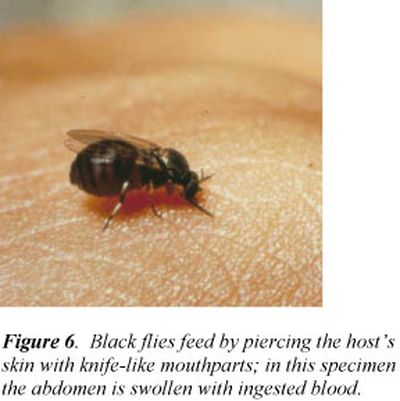Pesky bloodsuckers are in full attack mode

Residents are coping with a scourge of bloodsucking insects this week, including swarms of biting black flies that have turned Spokane Valley school offices into itchy triage centers.
Dozens of students and staff at Central Valley schools have been bitten on the neck by the flies, which inject an anti-coagulant to enable quick feeding.
“We’ve never seen anything like this before,” said schools spokeswoman Melanie Rose.
Some schools are corralling students onto pavement during recess in hopes of lessening their exposure to the painful fly bites. Others have chosen to keep kids inside despite the tease of summer weather.
Bill Edstrom, an epidemiologist with the Spokane Regional Health District, said the flies are more nuisance than threat.
While there’s always the risk of some kind of infection, the flies are not carriers of dangerous disease such as ticks, which can sicken people with bacterial infections including Lyme disease, Rocky Mountain spotted fever, and relapsing fever.
It’s the first time in memory for many school and regional health officials that the tiny black flies have morphed into such a bloody problem.
The flies seem to have emerged in force over the weekend, said health district spokeswoman Kim Papich.
Many students were bitten while outside during the pleasant weekend. Others were bitten while walking to and from bus stops. Monday morning was especially bad, Rose said.
School nurses and secretarial staff were inundated with calls, and the health district distributed a public notice about the tiny flies. The bite areas may swell if a person has an allergic reaction.
The flies, sometimes called “no-see-ums” or “punkies,” are most active at dawn and dusk near rivers, streams and pooled water – much like mosquitoes.
Light-colored and long-sleeved clothing is supposed to help, and bites can be salved with a topical medicine.
The health district also urged people to beware the annual tick season.
Two types of the crawly parasites are found throughout the region.
One is the so-called “soft tick,” which are found inside cabins and wooded areas and can infect people on rare occasion with relapsing fever. These ticks typically feed at night and drop from their host without being seen. People often don’t even know they have been bitten.
The other is a “hard tick,” often called a wood tick or dog tick, which bite and burrow beneath the skin and cause Rocky Mountain spotted fever. While cases of Rocky Mountain spotted fever are rare – there are between zero and three cases in Washington state each year – people should be wary if bitten and watch for a rash or fever within several weeks of removing the tick.
There has been one clinical diagnosis of Rocky Mountain spotted fever in a child in Spokane this year. Laboratory results have not confirmed the disease, which is treated with antibiotics.